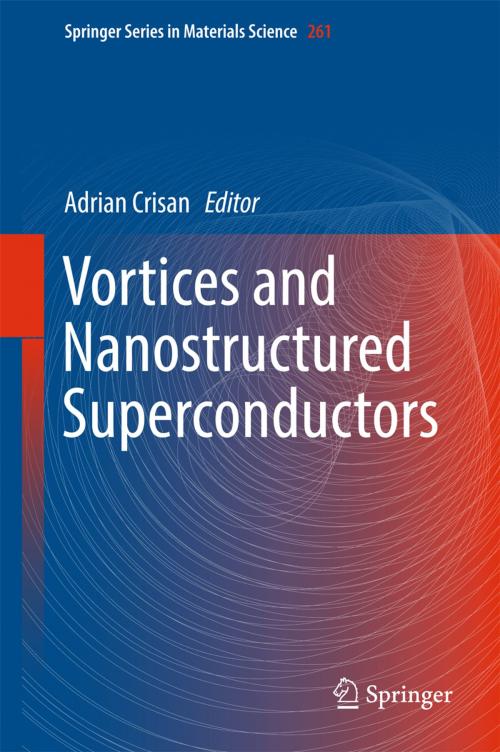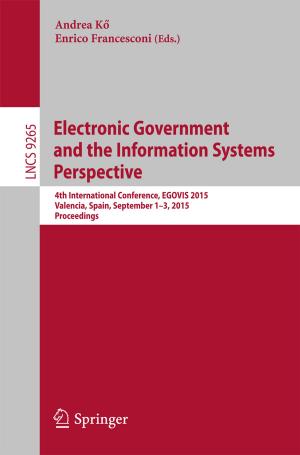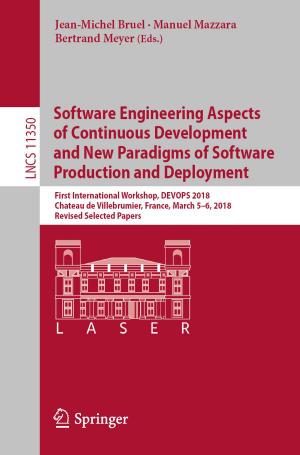Vortices and Nanostructured Superconductors
Nonfiction, Science & Nature, Technology, Superconductors & Superconductivity, Material Science| Author: | ISBN: | 9783319593555 | |
| Publisher: | Springer International Publishing | Publication: | July 19, 2017 |
| Imprint: | Springer | Language: | English |
| Author: | |
| ISBN: | 9783319593555 |
| Publisher: | Springer International Publishing |
| Publication: | July 19, 2017 |
| Imprint: | Springer |
| Language: | English |
This book provides expert coverage of modern and novel aspects of the study of vortex matter, dynamics, and pinning in nanostructured and multi-component superconductors. Vortex matter in superconducting materials is a field of enormous beauty and intellectual challenge, which began with the theoretical prediction of vortices by A. Abrikosov (Nobel Laureate). Vortices, vortex dynamics, and pinning are key features in many of today’s human endeavors: from the huge superconducting accelerating magnets and detectors at the Large Hadron Collider at CERN, which opened new windows of knowledge on the universe, to the tiny superconducting transceivers using Rapid Single Flux Quanta, which have opened a revolutionary means of communication.
In recent years, two new features have added to the intrinsic beauty and complexity of the subject: nanostructured/nanoengineered superconductors, and the discovery of a range of new materials showing multi-component (multi-gap) superconductivity. In this book, leading researchers survey the most exciting and important recent developments in the field. Topics covered include: the use of scanning Hall probe microscopy to visualize interactions of a single vortex with pinning centers; Magneto-Optical Imaging for investigating what vortex avalanches are, why they appear, and how they can be controlled; and the vortex interactions responsible for the second magnetization peak. Other chapters discuss nanoengineered pinning centers of vortices for improved current-carrying capabilities, current anisotropy in cryomagnetic devices in relation to the pinning landscape, and the new physics associated with the discovery of new superconducting materials with multi-component superconductivity. The book offers something for almost everybody interested in the field: from experimental techniques to visualize vortices and study their dynamics, to a state-of-the-art theoretical microscopic approach to multicomponent superconductivity.
This book provides expert coverage of modern and novel aspects of the study of vortex matter, dynamics, and pinning in nanostructured and multi-component superconductors. Vortex matter in superconducting materials is a field of enormous beauty and intellectual challenge, which began with the theoretical prediction of vortices by A. Abrikosov (Nobel Laureate). Vortices, vortex dynamics, and pinning are key features in many of today’s human endeavors: from the huge superconducting accelerating magnets and detectors at the Large Hadron Collider at CERN, which opened new windows of knowledge on the universe, to the tiny superconducting transceivers using Rapid Single Flux Quanta, which have opened a revolutionary means of communication.
In recent years, two new features have added to the intrinsic beauty and complexity of the subject: nanostructured/nanoengineered superconductors, and the discovery of a range of new materials showing multi-component (multi-gap) superconductivity. In this book, leading researchers survey the most exciting and important recent developments in the field. Topics covered include: the use of scanning Hall probe microscopy to visualize interactions of a single vortex with pinning centers; Magneto-Optical Imaging for investigating what vortex avalanches are, why they appear, and how they can be controlled; and the vortex interactions responsible for the second magnetization peak. Other chapters discuss nanoengineered pinning centers of vortices for improved current-carrying capabilities, current anisotropy in cryomagnetic devices in relation to the pinning landscape, and the new physics associated with the discovery of new superconducting materials with multi-component superconductivity. The book offers something for almost everybody interested in the field: from experimental techniques to visualize vortices and study their dynamics, to a state-of-the-art theoretical microscopic approach to multicomponent superconductivity.















